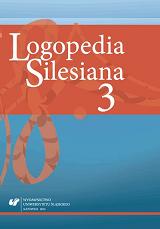Effects of speaker gender and child age on the prosody of parentese: cross-linguistic evidence
Effects of speaker gender and child age on the prosody of parentese: cross-linguistic evidence
Author(s): Paul CorthalsSubject(s): Psychology
Published by: Wydawnictwo Uniwersytetu Śląskiego
Keywords: prosodic; intonation; segment-marking prosody; researches the child's speech
Summary/Abstract: Parentese is the speech-language register adults switch to when talking to children. It regulates arousal, communicates affect, and its segment-marking prosody is thought to facilitate language learning. This "didactic prosody" is compared in English and Dutch, and in male and femaleparentese addressed to children between 0;5 and 2;4. Prosodic contrasts between child-directed and an adult-directed samples were calculated. ANCOVA analyses were performed, treating the prosodic parameters as dependent variables, adult gender and language as fixed factors, and child age as a covariate. Female speakers exaggerated intonation significantly more and tuned their voice pitch to the child's age. Voice pitch was raised significantly more by female American English parentese speakers. Speech rate was lowered significantly more in Flemish Dutch. It is hypothesized that voice pitch is used as a paralinguistic feature to address younger infants and lower speech rates to address older children, who are beginning to comprehend verbal messages.
Journal: Logopedia Silesiana
- Issue Year: 2014
- Issue No: 3
- Page Range: 19-30
- Page Count: 12
- Language: English

